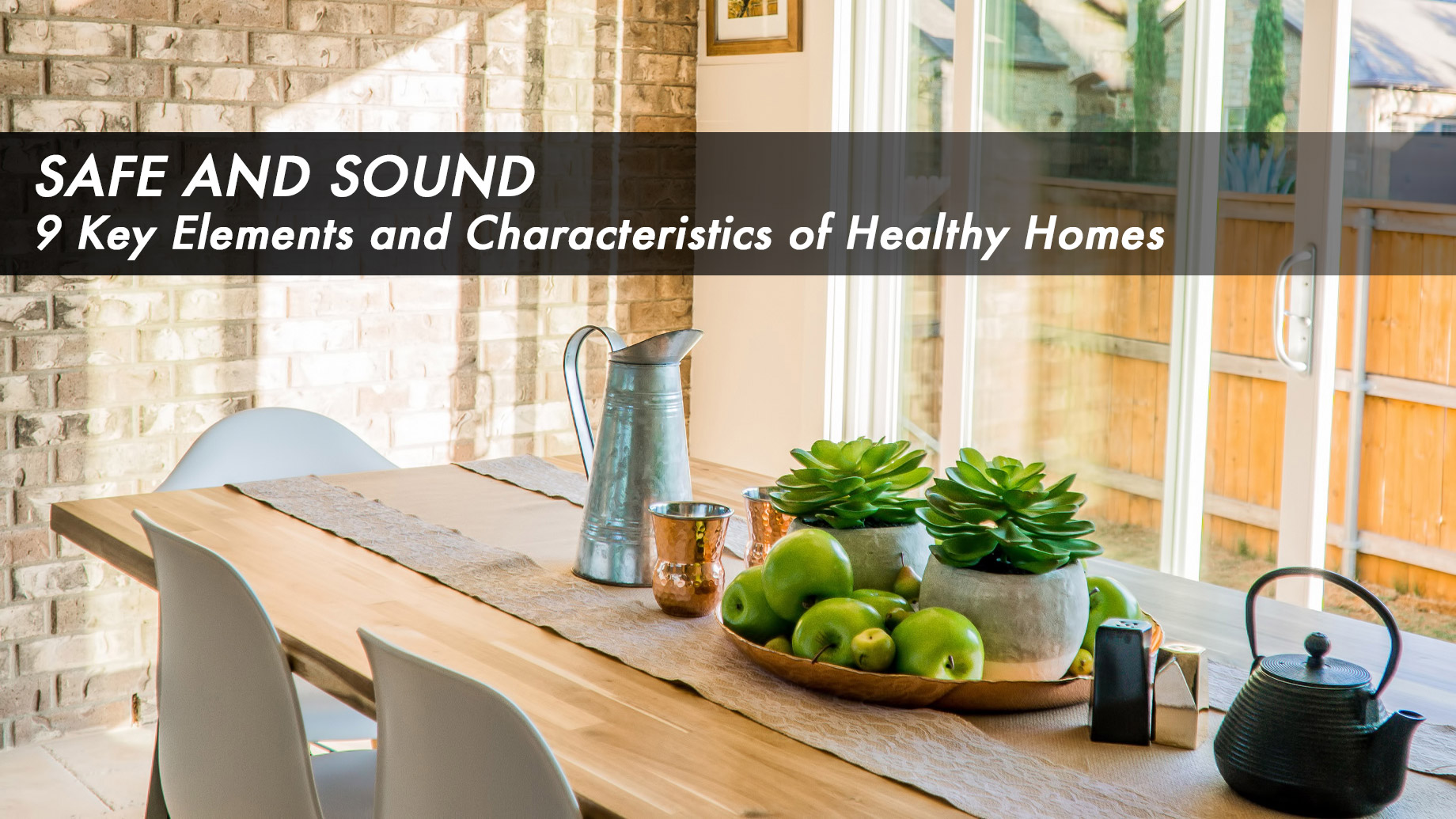
Your home isn’t just a place for you to eat and sleep. It’s your fortress; Your safe place. As such, it should be characterized by a healthy environment.
The question you might have is: what constitutes a healthy environment? What exactly makes a healthy home? We’re going to get into that question below.
Without further ado, here are the 9 key elements and characteristics of healthy homes.
1. Security
One of the key characteristics of a healthy home is security. The more secure a home is, the safer it is to live in. The safer it is to live in, the more comfortable it allows its dwellers to feel.
There are a few different ways to increase the security capabilities of a home. The primary way to establish home security is to install high-quality locks. The more secure your locks, the less vulnerable your home will be to break-ins.
Another way to increase security is to install a security system. Security systems serve not only as detractors against intruders but as alert systems to both the dwellers of homes and local law enforcement authorities.
2. Cleanliness
Another element of a healthy home is cleanliness. The cleaner the home, the more comfortable its environment. Not to mention, clean homes are less likely to lead to sickness.
To keep your home clean, you must engage in a number of responsibilities. Not only must you vacuum and dust but you must also wipe down countertops, scrub bathtubs, sinks, and toilets, and take out the trash on a regular basis.
It’s also important to keep clutter to a minimum. Clutter not only has negative psychological effects but it’s also inviting to pests and rodents.
3. Dryness
Few things wreak havoc on a home in the way that moisture does. Moisture damages homes discreetly, seeping through small cracks and floating in with the air. Failure to keep moisture out of your home could lead to structural deterioration, musty smells, and mold growth.
As such, you need to do everything in your power to promote dryness. Keep your roof patched up, fix cracks in your foundation, and ensure that your drainage system is adequate.
In addition, you should consider using a dehumidifier. In some areas, humidity alone can be enough to cause damage.
4. Safety
Up next is safety. If your home is unsafe, it’s not much of a home at all. After all, you shouldn’t have to deal with danger in a place meant to help you feel comfortable.
There’s a lot that goes into home safety. First, you should ensure that containers are properly sealed and stored, ensuring that they’re not in reach of children and animals.
Next, you should ensure that the floors have plenty of traction. If rugs are laid, they should possess rubber bottoms.
Lastly, you should make sure that your safety implements are prepared. Not only should you have smoke detectors and carbon monoxide detectors on the premises, but you should also have a fire extinguisher.
5. Energy Efficiency
A home should feel cozy and comfortable. It can’t feel that way if it’s lacking in energy efficiency. As such, energy efficiency is one of the key elements of a healthy home.
To optimize energy efficiency in your home, you need to prioritize insulation. Having your home properly insulated will prevent the inward flow of heat and cold, taking strain off of your HVAC system.
And about your HVAC system; It should possess high-tier energy efficiency in and of itself. If it’s over 20 years old, it’s likely wasting energy. The newer your furnace and air conditioner, the more energy-efficient your home will be.
6. Maintenance
Like all things in existence, homes deteriorate over time. However, as long as we maintain them, we can ensure their health in the long run. This is why maintenance is one of the key elements of a healthy home.
Maintenance includes everything from repairing cracks to performing upkeep on appliances to taking care of your yard and the like. The more love you show to your home, the better off it will be.
7. A Lack of Pests
One of the quickest ways for a home to lose value is for it to be overrun with pests. Mice, rats, and cockroaches are not only psychologically terrifying, but they also possess the potential to spread disease.
As such, you need to do everything you can to keep pests out of your home. Patch up gaps in your roof and foundation, keep food off of your countertops, take out the trash on a regular basis, and do everything else necessary to keep pests away.
8. Proper Ventilation
Next up is proper ventilation. Ventilation not only helps to optimize air quality, but it also helps to stave off mold, musty smells, and other negative entities.
Now, what does proper ventilation entail? Generally speaking, it includes open windows and ample running fans. Ultimately, the goal is to keep air circulating by preventing it from sitting in one place.
9. A Lack of Contaminants
The last element of a healthy home is a lack of contaminants. The fewer contaminants your home possesses, the safer it will be.
Contaminants to look out for include lead paint, asbestos, and radon. Exposure to these contaminants over the long-term could lead to serious health problems.
You’ll also want to do away with contaminants in your water. These include everything from coliform bacteria to lead to arsenic and more. A water filter will help establish clean drinking water for home consumption.
Peruse Healthy Homes Now
Now that you know what comprises healthy homes, you might be looking for one of your own. If so, you’re in the right place. The Pinnacle List has you covered. We list luxury homes from all over the United States and Canada.